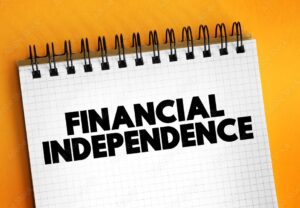
From Struggle to Success: Personal Journeys to Financial Independence
Contents
- 1 Journeys to financial independence
- 1.1 From Struggle to Success: Personal Journeys to Financial Independence
- 1.1.1 The Path to Financial Independence
- 1.1.2 Understanding Financial Independence
- 1.1.3 Personal Journey 1: Starting Small and Growing Steadily
- 1.1.4 Personal Journey 2: Entrepreneurship and Smart Investments
- 1.1.5 Personal Journey 3: Frugality and Long-Term Planning
- 1.1.6 Tips and Strategies for Achieving Financial Independence
- 1.1.7 Conclusion
- 1.2 FAQs
- 1.2.0.1 1.What is financial independence?
- 1.2.0.2 2.How long does it take to achieve financial independence?
- 1.2.0.3 3.Is it necessary to invest to achieve financial independence?
- 1.2.0.4 4.What are some common mistakes to avoid on the path to financial independence?
- 1.2.0.5 5.Can financial independence be achieved on a low income?
- 1.2.0.6 6.What role does frugality play in achieving financial independence?
- 1.2.0.7 7.How important is an emergency fund?
- 1.2.0.8 8.Should I pay off debt or invest first?
- 1.2.0.9 9.What are some passive income sources?
- 1.2.0.10 10.How can I start investing with limited knowledge?
- 1.3 Journeys to financial independence
- 1.4 Success Stories of Retail Investors: How Ordinary People Achieved Extraordinary Results
- 1.1 From Struggle to Success: Personal Journeys to Financial Independence
Journeys to financial independence
From Struggle to Success: Personal Journeys to Financial Independence
The Path to Financial Independence
Achieving financial independence is a dream for many, but the path can vary greatly from person to person. In this article, we will explore several personal journeys to financial independence, highlighting the strategies, challenges, and key decisions that led to financial freedom. By sharing these stories, we hope to provide insights and inspiration for those on their own journey towards financial independence.


Understanding Financial Independence
Before diving into personal stories, it’s important to define what financial independence means. At its core, financial independence refers to having enough wealth to cover your living expenses without needing to work actively for money. This can be achieved through a combination of savings, investments, and passive income streams.
Key Elements of Financial Independence
- Savings: Consistently saving a portion of your income is fundamental to building wealth.
- Investments: Investing wisely in stocks, bonds, real estate, or other assets helps grow your wealth over time.
- Passive Income: Generating income through dividends, interest, rental income, or business ventures that require minimal effort to maintain.


Personal Journey 1: Starting Small and Growing Steadily
Early Financial Struggles
John’s journey to financial independence began in his early twenties. Fresh out of college, he faced significant student loan debt and a modest starting salary. John knew that achieving financial independence would require careful planning and disciplined saving.
Building a Budget
John started by creating a strict budget, tracking every dollar he spent. This helped him identify areas where he could cut back, such as dining out and unnecessary subscriptions. By living frugally, he was able to allocate more money towards paying off his debt and building an emergency fund.
Investing for the Future
Once his debt was under control, John began investing in the stock market. He started with low-cost index funds, which offered diversification and lower risk. Over time, he expanded his portfolio to include individual stocks and real estate investments. By consistently contributing to his investments and reinvesting dividends, John saw his wealth grow steadily.


Reaching Financial Independence
After 15 years of disciplined saving and investing, John reached a point where his passive income from investments covered his living expenses. He was able to quit his job and pursue his passion for travel, knowing that his financial future was secure.
Personal Journey 2: Entrepreneurship and Smart Investments
Finding a Niche
Jane’s path to financial independence took a different route. With a background in marketing, she identified a gap in the market for affordable digital marketing services for small businesses. She started her own company, offering tailored solutions at competitive prices.
Growing the Business
Jane’s business grew rapidly, thanks to her dedication and ability to adapt to market demands. She reinvested profits into the company, hiring skilled employees and expanding her services. Within a few years, her business was generating substantial revenue.
Diversifying Income Streams
While her business was thriving, Jane knew the importance of diversifying her income. She invested in real estate, purchasing rental properties that provided a steady stream of passive income. Additionally, she invested in stocks and bonds to further secure her financial future.
Achieving Financial Independence
Jane’s hard work paid off, and by her early forties, she reached financial independence. Her business, combined with her investments, provided enough income to cover her lifestyle. Jane chose to continue working, but with the freedom to focus on projects she was passionate about, rather than purely for financial necessity.


Personal Journey 3: Frugality and Long-Term Planning
Early Lessons in Money Management
Mike’s journey began with lessons he learned from his parents, who emphasized the importance of frugality and long-term planning. He carried these principles into adulthood, living below his means and saving diligently.
Investing Wisely
Mike focused on maximizing his retirement accounts, contributing the maximum allowed to his 401(k) and IRA. He also invested in a diversified portfolio of stocks and bonds, ensuring a balanced approach to growth and risk management.
Minimizing Expenses
One of Mike’s key strategies was minimizing expenses. He avoided debt, bought used cars, and cooked at home. By keeping his expenses low, he was able to save a significant portion of his income.
Reaping the Benefits
By his late fifties, Mike’s disciplined approach had paid off. His investments had grown substantially, and he had no debt. He retired early, enjoying a comfortable lifestyle funded by his savings and investment returns.


Tips and Strategies for Achieving Financial Independence
1. Start Early
The earlier you start saving and investing, the more time your money has to grow. Compound interest works best over long periods, so starting early can make a significant difference.
2. Live Below Your Means
Adopting a frugal lifestyle and avoiding unnecessary expenses allows you to save and invest more. This doesn’t mean depriving yourself but being mindful of your spending.
3. Invest Wisely
Diversify your investments to manage risk and ensure long-term growth. Consider a mix of stocks, bonds, real estate, and other assets to build a robust portfolio.
4. Build Multiple Income Streams
Relying on a single source of income can be risky. Explore opportunities to generate passive income through investments, rental properties, or side businesses.
5. Continuously Educate Yourself
Stay informed about personal finance and investment strategies. Continuous learning can help you make better financial decisions and adapt to changing market conditions.


Conclusion
The journey to financial independence is unique for everyone, but the underlying principles remain consistent. By living below your means, saving diligently, and investing wisely, you can pave the way towards financial freedom. The personal stories shared here demonstrate that with dedication and smart financial choices, achieving financial independence is within reach. Use these insights and strategies to inspire and guide your own journey towards a financially independent future.
FAQs
1.What is financial independence?
A. Financial independence means having enough wealth to cover your living expenses without needing to work actively for money.
2.How long does it take to achieve financial independence?
A. The timeline varies depending on factors like income, expenses, savings rate, and investment returns. It can take anywhere from 10 to 30 years or more.
3.Is it necessary to invest to achieve financial independence?
A. Investing is a crucial component as it helps grow your wealth over time through compound interest and returns.
4.What are some common mistakes to avoid on the path to financial independence?
A. Common mistakes include living beyond your means, accumulating high-interest debt, and not investing early or adequately.
5.Can financial independence be achieved on a low income?
A. Yes, with disciplined saving, frugality, and wise investing, it is possible to achieve financial independence even on a lower income.
6.What role does frugality play in achieving financial independence?
A. Frugality helps in saving more money, which can be invested to grow wealth and achieve financial independence faster.
7.How important is an emergency fund?
A. An emergency fund is crucial as it provides financial security in case of unexpected expenses, preventing the need to dip into investments.
8.Should I pay off debt or invest first?
A. It depends on the type of debt and interest rates. High-interest debt should be paid off first, while low-interest debt can be managed alongside investing.
9.What are some passive income sources?
A. Passive income can come from dividends, rental income, interest from savings accounts, and income from a business that requires minimal effort to maintain.
10.How can I start investing with limited knowledge?
A. Start with low-cost index funds or ETFs, and gradually educate yourself on different investment options. Consulting with a financial advisor can also be helpful.
Journeys to financial independence
Success Stories of Retail Investors: How Ordinary People Achieved Extraordinary Results





















1 comment